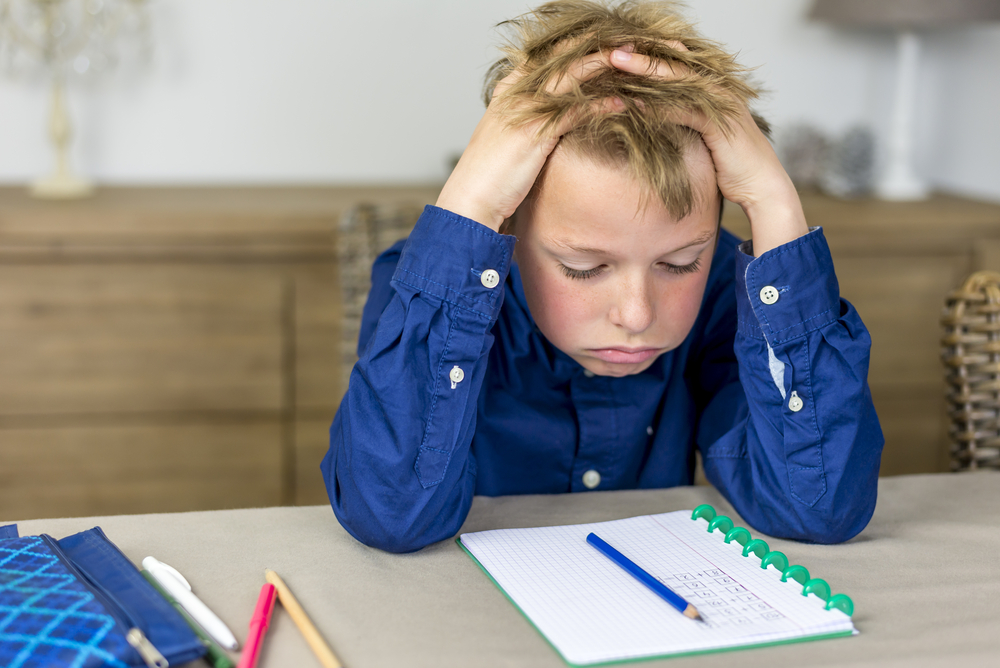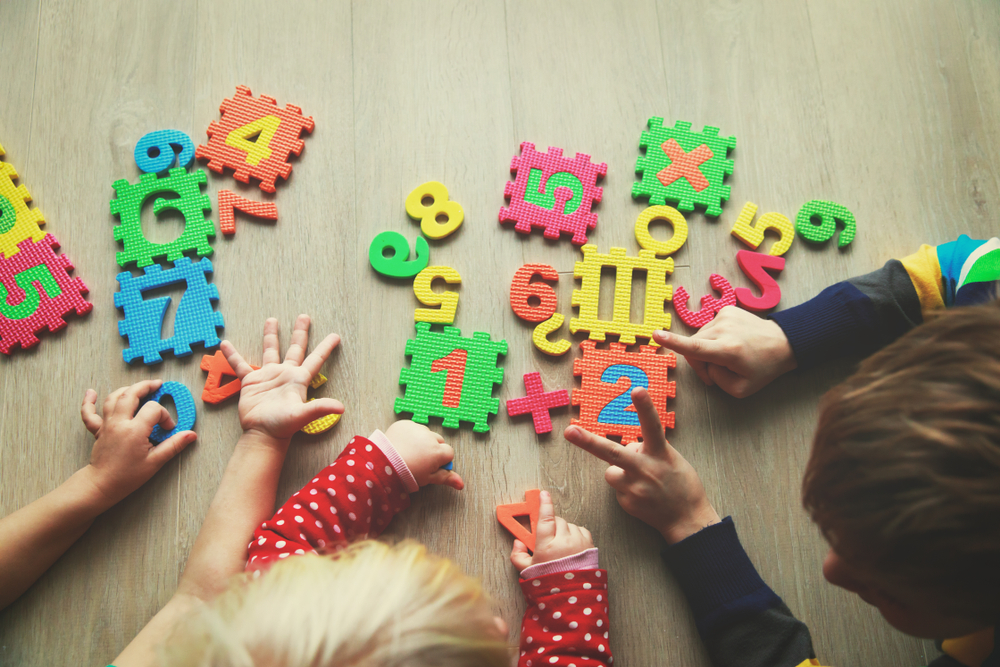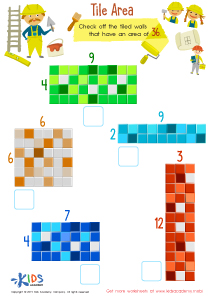Number comparison Normal Numbers Worksheets for Ages 6-7
5 filtered results
-
From - To
Discover our engaging Number Comparison Worksheets designed specifically for children aged 6-7! These worksheets focus on helping young learners develop essential math skills by comparing normal numbers through fun and interactive exercises. With vibrant illustrations and age-appropriate challenges, kids will enjoy identifying which numbers are greater, lesser, or equal. Our resources foster critical thinking and promote number sense, providing a solid foundation for future math concepts. Ideal for classroom activities or at-home practice, these worksheets empower young students to build confidence in their math abilities while enhancing their understanding of number relationships. Explore the joy of learning with our Number Comparison Worksheets today!
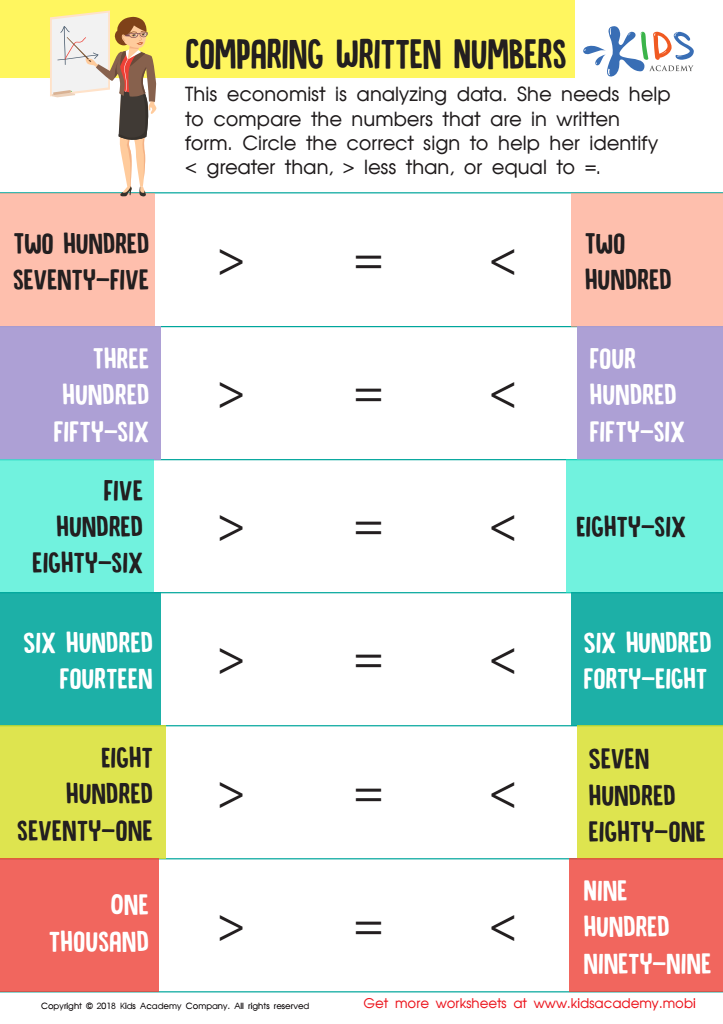

Comparing Written Numbers Worksheet
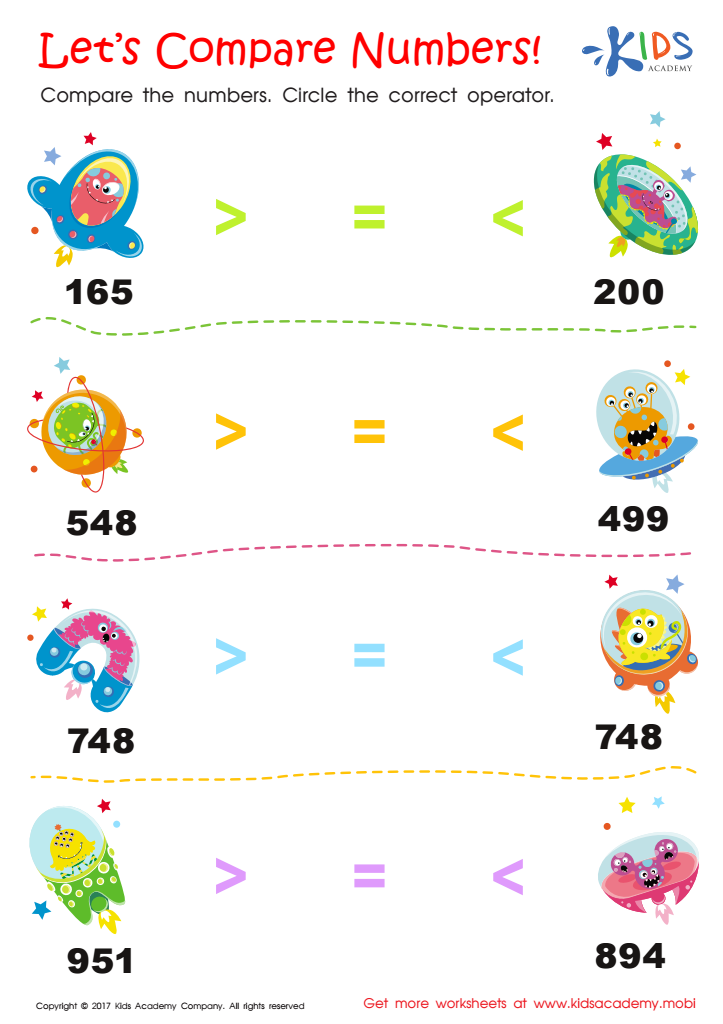

Comparing Numbers Worksheet for 2nd Grade
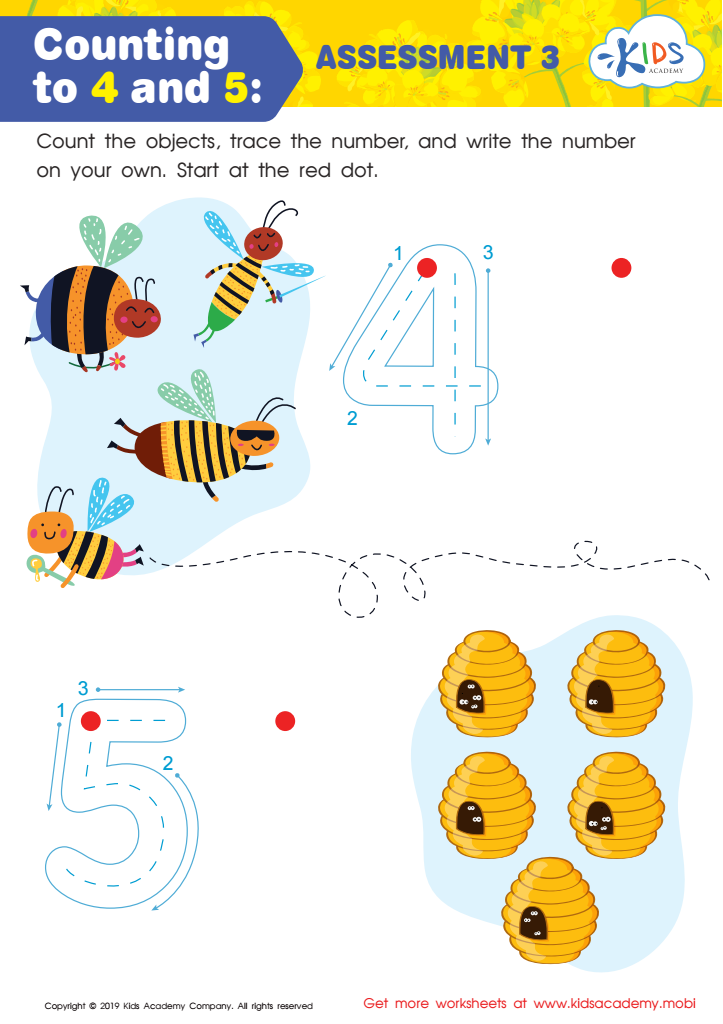

Counting to 4 and 5: Assessment 3 Worksheet
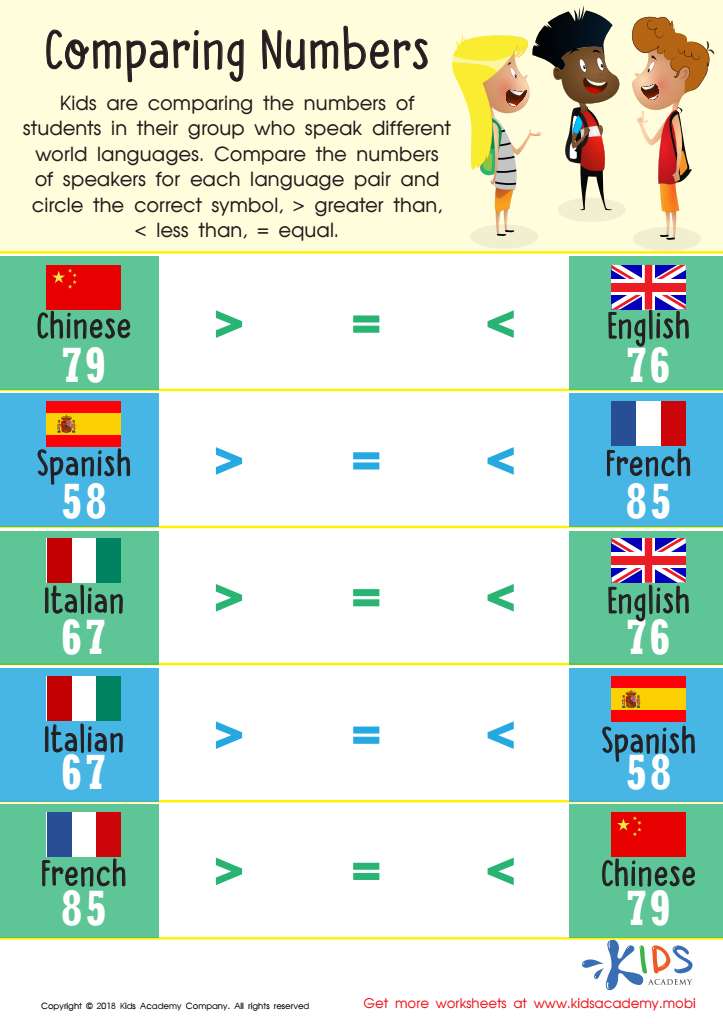

Comparing Numbers Worksheet for 1st Grade
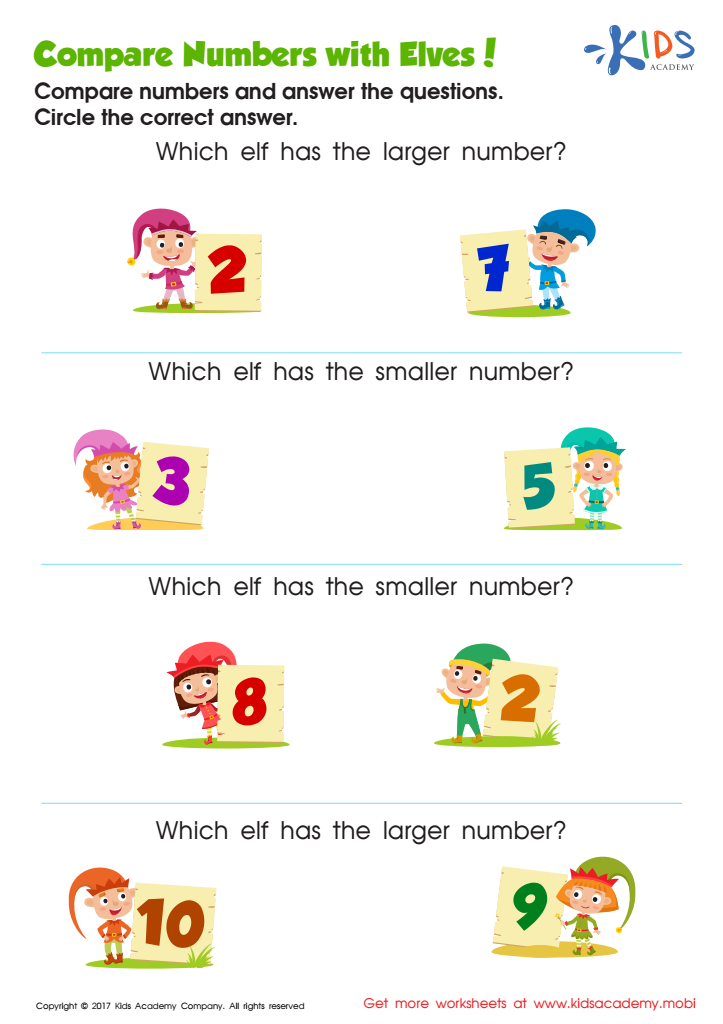

Comparing Numbers Worksheet for Kindergarten
Parents and teachers should care about number comparison using normal numbers for children aged 6-7 because this foundational skill plays a critical role in developing their mathematical understanding and everyday problem-solving abilities. At this age, children are transitioning from understanding the basic concepts of numbers to comparing them, which is essential for more complex arithmetic tasks later on.
Learning to compare numbers helps children grasp important concepts such as greater than, less than, and equal to, enabling them to understand the order of numbers. These skills not only foster mathematical reasoning but also enhance critical thinking as children learn to analyze and categorize quantities in their environment.
Moreover, number comparison lays the groundwork for future topics in mathematics, such as addition and subtraction, as well as spatial reasoning and algebraic thinking.
Encouraging children to practice number comparison through games, everyday situations, and interactive activities allows for engaging learning opportunities. As they connect math to real-life experiences, children develop confidence in their abilities, making them more likely to succeed in future mathematical endeavors. By supporting this skill, parents and teachers are investing in a child's cognitive development and lifelong learning habits.
 Assign to My Students
Assign to My Students









